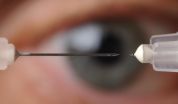High blood pressure puts 1 in 4 Nigerians at risk, study says
2014-11-13
(Press-News.org) High blood pressure - already a massive hidden killer in Nigeria - is set to sharply rise as the country adopts western lifestyles, a study suggests.
Researchers who conducted the first up-to-date nationwide estimate of the condition in Nigeria warn that this will strain the country's already-stretched health system.
Increased public awareness, lifestyle changes, screening and early detection are vital to tackle the increasing threat of the disease, they say.
High blood pressure - also known as hypertension - is twice as high in Nigeria compared with other East African countries and less than 20 per cent of Nigerians are aware that they have the condition. Hypertension puts people at risk of heart disease, kidney disease and stroke.
Researchers estimated that there were more than 20 million cases of hypertension in Nigeria in 2010, affecting one in-three men and one-in-four women. This is set to rise to 39 million cases by 2030. Data from South Africa suggests that high blood pressure is treated effectively in less than 10 per cent of cases.
Scientists at the University of Edinburgh, who carried out the study, say that understanding of hypertension in Nigeria and other African countries has been affected by lack of patient data.
Their findings have been published in the Journal of Hypertension.
Dr Davies Adeloye, of the University of Edinburgh's Centre for Population Health Sciences, said: "We have conducted a systematic search of high quality studies on hypertension across Nigeria and provided estimates of the prevalence and number of cases of hypertension in the country. We hope this will prompt appropriate policy response in the health sector."
INFORMATION:
ELSE PRESS RELEASES FROM THIS DATE:
2014-11-13
Researchers at The University of Texas have found that compared to Caucasian Americans, African Americans have impaired blood flow regulation in the brain that could contribute to a greater risk of cerebrovascular diseases such as stroke, transient ischaemic attack ("mini stroke"), subarachnoid haemorrhage or vascular dementia. These findings were published in Experimental Physiology, the journal of The Physiological Society.
Cerebrovascular diseases can result from reduced blood flow in affected areas of the brain. It is still unclear why African Americans are at higher ...
2014-11-13
Needles almost too small to be seen with the unaided eye could be the basis for new treatment options for two of the world's leading eye diseases: glaucoma and corneal neovascularization.
The microneedles, ranging in length from 400 to 700 microns, could provide a new way to deliver drugs to specific areas within the eye relevant to these diseases. By targeting the drugs only to specific parts of the eye instead of the entire eye, researchers hope to increase effectiveness, limit side effects, and reduce the amount of drug needed.
For glaucoma, which affects about 2.2 ...
2014-11-13
(PHILADELPHIA) - Glioblastoma is the most common aggressive primary brain tumor, and despite advances in standard treatment, the median survival is about 15 months (compared to 4 months without treatment). Researchers at Thomas Jefferson University have been working on a cancer vaccine that would extend that survival by activating the patient's immune system to fight the brain tumor. A study published online November 13th in the journal Cancer Immunology, Immunotherapy drilled down to the cellular and molecular mechanisms behind the vaccine, paving the way for further development ...
2014-11-13
Hospitalized premature infants are exposed to unsafe levels of a chemical found in numerous medical products used to treat them, raising questions about whether critically ill newborns may be adversely affected by equipment designed to help save their lives.
The chemical, di(2-ethylhexyl)phthalate (DEHP), is used to increase flexibility of many plastic devices. These products, made from polyvinyl chloride (PVC), include most intravenous tubing, catheters, endotracheal tubes, and fluid and blood product bags. DEHP doesn't bind chemically to PVC, and is able to leach into ...
2014-11-13
In a new study, Use of Social Network Sites at Work: Does it Impair Performance?, Postdoctoral Fellow Cecilie Schou Andreassen and colleagues at the University of Bergen's (UiB) Department of Psychosocial Science looked at the consequences of the use of social media during working hours.
Every day, more than one billion people worldwide use social media. This habit has also invaded the workplace, as some research reports that four out of five employees use social media for private purpose during working hours.
Surprisingly, although this type of distraction may potentially ...
2014-11-13
Scientists used mathematical models to show that analysing genetic data, alongside a range of other risk factors, could substantially improve the ability to flag up women at highest risk of developing breast cancer.
Their study showed that prevention strategies could be improved by testing not only as currently for major cancer predisposition genes such as BRCA1 and BRCA2 - which identify a small percentage of women at very high risk - but also by factoring in data on multiple gene variants that individually have only a small effect on risk, but are more common in the ...
2014-11-13
Researchers at the Bellvitge Biomedical Research Institute of Bellvitge, the Catalan Institute of Oncology and the University Hospital of Bellvitge have participated in an international study published in the journal Cancer Cell that describes how exosomes secreted by tumor cells contain protein and microRNA molecules capable of transform neighboring cells into tumoral cells promoting tumor growth.
What are exosomes?
Exosomes are small vesicles which are secreted by all cells and contain proteins and messenger RNAs and microRNAs. At first it was thought that only functioned ...
2014-11-13
Researchers at the ARC Centre of Excellence for Coral Reef Studies (Coral CoE) at James Cook University in Australia have found a way to predict illegal fishing activities to help authorities better protect marine reserves.
Marine reserves are the most common strategy used to protect and maintain marine ecosystems around the world.
The International Convention of Biological Diversity aims to have 10 per cent of the world's marine areas protected by 2020.
Many countries are contributing to this target by protecting remote, offshore areas. For example, the United ...
2014-11-13
(SACRAMENTO, Calif.) -- This week's issue of the New England Journal of Medicine features an article that highlights an unprecedented analysis of the nation's childhood head injuries. The study, authored by physicians at UC Davis School of Medicine and Washington University School of Medicine, analyzed more than 43,000 children who were evaluated for head trauma at 25 emergency departments around the United States. In the accompanying supplements, detailed information about these children, their presentations and results will be useful to doctors and helpful to policy makers ...
2014-11-13
BOSTON, MA - Sleep disorders are independent risk factors for heart attacks and motor vehicle crashes, which are the two leading causes of death for firefighters in the United States. In a national sample of almost 7,000 firefighters, researchers at Brigham and Women's Hospital (BWH) examined the prevalence of common sleep disorders and their association with adverse health and safety outcomes and found that sleep disorders are highly prevalent, and associated with substantially increased risk of motor vehicle crashes and cardio-metabolic diseases among firefighters.
Findings ...
LAST 30 PRESS RELEASES:
[Press-News.org] High blood pressure puts 1 in 4 Nigerians at risk, study says


